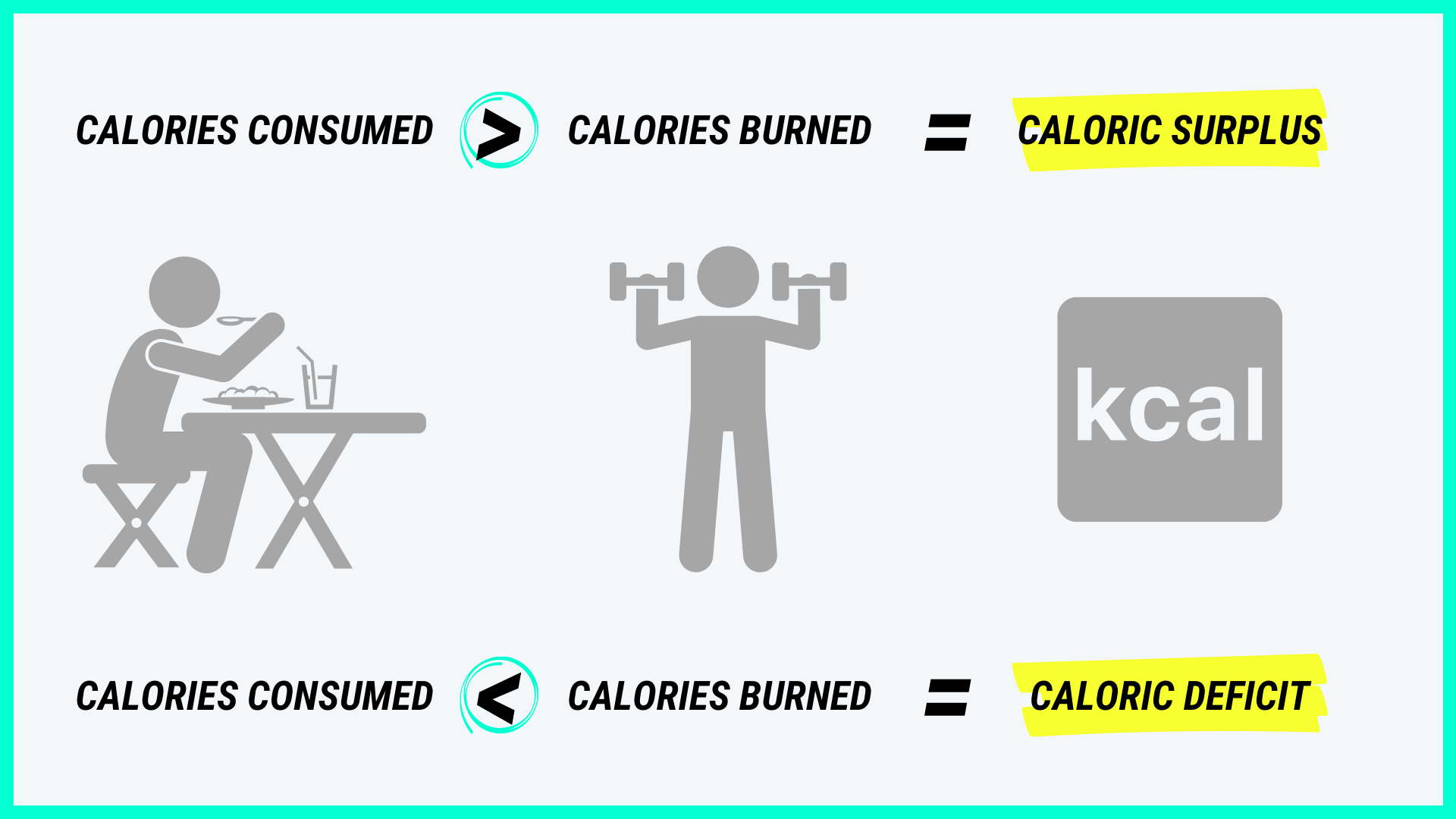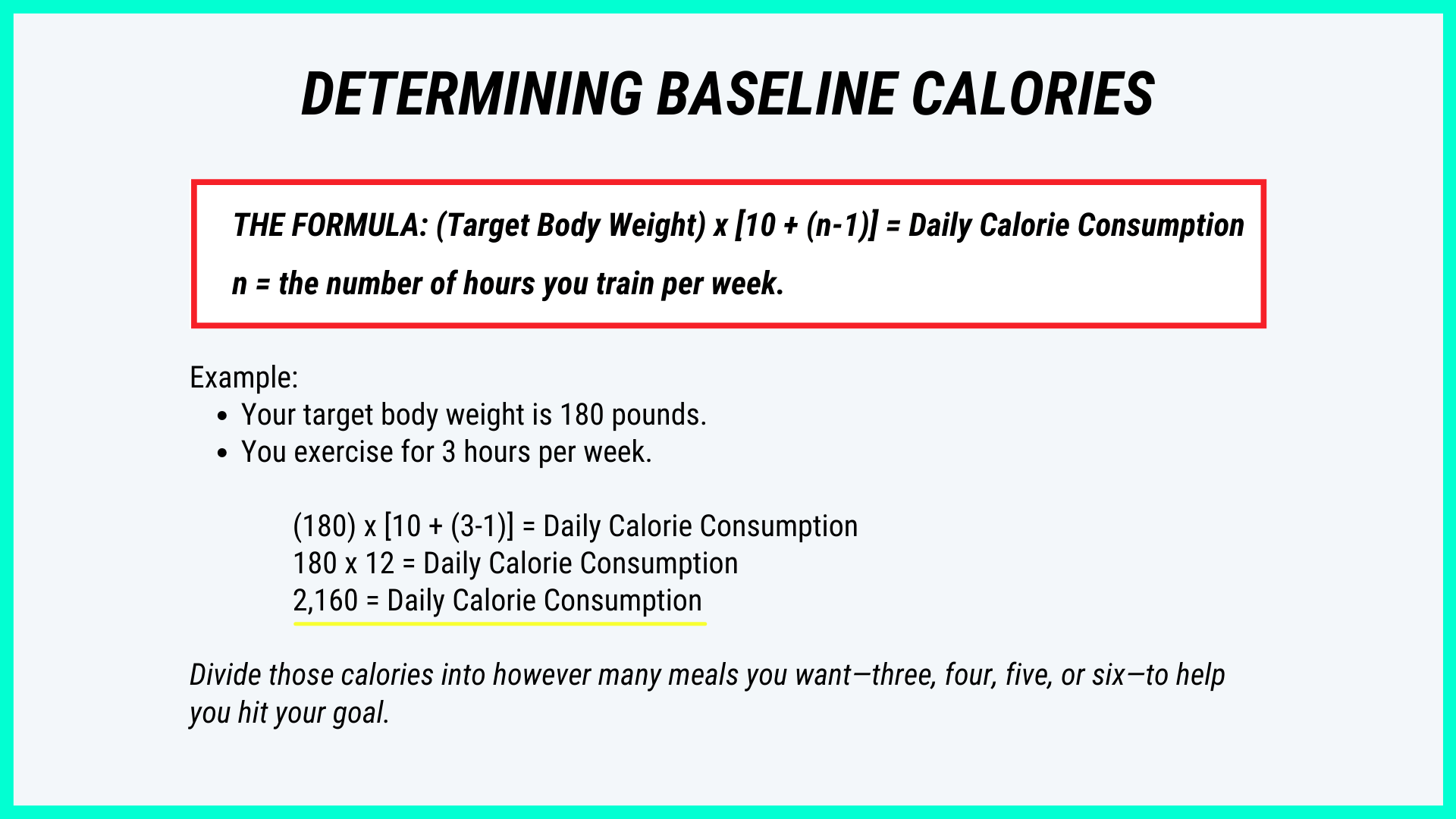They say muscle growth is simple, just not easy. Sure, adding size isn’t rocket science, but it does require a lot of good old-fashioned hard work.
But, if you just focus on completing 3 sets of 10 reps on a variety of exercises, the odds are you won’t have much muscle to show for all your hours in the gym.
Muscle growth requires checking several boxes — with both nutrition and training — to help your body break down muscle tissue and build it back. It’s the main reason most people don’t see dramatic changes. They do some of the work, but not all of it.
If you’re looking to add more muscles, here are the principles you must master.
Table of Contents
Principle #1: Muscle Growth Requires Calories
The quest for more muscle starts with nutrition. Your first order of business is getting your calorie intake in order.
Gaining muscle fast requires being in a calorie surplus (eating more calories than you burn).

This means eating is a priority, but you don’t need to go overboard. You can only gain muscle so fast, and a modest calorie surplus works just as well as “eating everything in sight” and leaves you with a lot less fat to lose later.
Editor’s note: The importance of the calorie-muscle gain equation is why the idea of “lifting weights makes you bulky” is more myth than reality. If you’re not eating in a way to add size, you’re not going to add size. You’ll become stronger. You’ll add definition. But, the amount of muscle you can gain is directly influenced by how much you eat.
Even with a conservative bump in how much you eat, you’ll still gain some fat with the muscle, and it’s important to be prepared for that reality.
So, how do you determine the caloric “sweet spot” where you maximize muscle and minimize fat gain?
To start, you need to figure out your average daily calorie intake, or maintenance calories. Tracking your eating with an app makes this much easier, though a basic notebook works too.
Here’s a basic formula you can use to determine your baseline calories.
The formula: If you perform 1 hour or less of exercise a week, multiply your target body weight by 10. That’s how many calories you should consume daily.
However, if you work out more than that, add 1 to the multiplier for every additional hour you train. So, if your target body weight is 180 pounds and you exercise for 3 hours a week, you’d multiply 180 by 12—giving you a target of 2,160 calories a day. You can divide those calories into however many meals you want—three, four, five, or six—to help you hit your goal.

Once you know your maintenance calories, it’s just a matter of adding the right amount of extra calories to get your body weight to increase gradually.
An extra 500 calories a day is a good starting point, but the real question is if you’re gaining weight. If you want to minimize fat gain, a good rule of thumb is keeping weight gain around 2 pounds per month. If you’re a complete beginner, that amount can be more than twice as much.
Why 2 pounds a month? Considering muscle gain is a slow process, any more than that and you’re probably adding too much fat. However, any slower and you’re not gaining muscle as fast as you could be either.
If you find that you’ve gained 3 pounds in a week, pump the breaks. Cut your calorie intake by about around 200-300 calories per day.
On the other hand, if the scale says you’re barely gaining at all, then increase your calorie intake by 200- 300 calories per day and continue to track your progress.
The calorie game plan is simple: assess, adjust, and repeat.
Principle #2: Optimize For Protein (But, Don’t Forget This Exception)
On top of dialing in your calorie intake, you need to make sure you’re eating enough protein. Research suggests that the perfect range for building muscle is anywhere from 0.6- to 1-gram of protein per pound of your goal body weight.
That’s most of the dietary battle. If you’re consistently hitting your calorie and protein goals, then you’ve got your nutritional bases covered for gaining muscle.
Whether you’re building muscle or losing fat, it’s important to think about eating for the body you want, not the body you have.
But, there’s an exception. Remember how we said you don’t want to be gaining weight too fast? Let’s say you’re 140 pounds and you want to weigh 180. A 40-pound jump is a lot of weight.
Eating that many more calories and pumping up your protein would be a massive shock to your system that would likely lead to more fat gain and be a world of hurt for your digestive system.

It’s good to know your big picture goal — but it’s more important to break that bigger goal into smaller steps that will ensure constant progress. Many people force their way into plateaus during a muscle growth phase simply because they don’t create more realistic check-points along the process.
Instead of going all in, break your goals into 10-pound increments. That means, for the example above, you’d first try to eat for a 150-pound body. Once you hit 150, then you’d adjust your calories and protein for a 160-pound body. Each step you hit will also allow your body to readjust its set point.
As you probably know, your body tends to gravitate to a certain weight. When you gain or lose, you want to make it easier for your body to adjust, and this process can help make that a reality so that it doesn’t feel like a constant battle to stay at your new weight.
Principle #3: Train each muscle 2-3 times per week
You can gain muscle only hitting each muscle once per week, or by working each muscle even more frequently. But, if you’re trying to maximize muscle gain, 2-3 times per week seems to be your best bet.
The cellular processes of building muscle (muscle protein synthesis) are only humming away at high speed for about 24-48 hours after you finish a workout.
So, if you only train a muscle once per week, your muscles are only spending about 1/7-2/7 of their time in “growth mode.”
Training a muscle more frequently can work, but your margin for error gets smaller, and you run a greater risk of overuse injuries or suboptimal recovery.
Remember, more isn’t always more with muscle gain. If all it took to gain muscle was tons of reps, there’d be a lot of people walking around with massive biceps.
The right amount of reps, the best exercise, a locked in diet, and optimized recovery is essential. When you lift weight, the muscle fibers tear and break down.
And then your muscles grow during the recovery phase.
Principle #4: Focus on full range of motion (And check your ego)
Working a muscle through a full range of motion builds the most muscle and strength. When muscles are slightly stretched under load, more muscle damage occurs, and local concentrations of muscle-building hormones increase much more than they do with shorter ranges of motion.
Basically, half reps only build your ego.
Lifting through a full range of motion may also help with injury prevention. Your muscles add more contractile units in series, meaning your muscle can stretch farther without the risk of tearing.
Your nervous system also learns how to control your muscles and joints through greater degrees of joint flexion, where most injuries occur if you don’t have enough control.
Mastering a full range of motion usually means you’ll need to lower the weight you’re using — sometimes significantly. It can feel like a step back, but you’re playing the long game.
The lighter, full range reps will still have benefits. And, as you add more strength, that one-step back will turn into 10 steps forward with muscle growth.
Principle #5: Prioritize Full-Body Exercises (and focus on building strength)
You shouldn’t build a workout around 14 different biceps exercises, and “bench day” shouldn’t be “every day ending in “y.”
You add muscle when you prioritize multi-joint lifts that focus on your entire body. Here’s how to make sure you’re picking the right movements.
Select 2-3 exercises from each of the following 6 categories, and do each of those exercises once per week:
Knee-dominant: Back squats, front squats, leg press, hack squat, single-leg squat variations (like Bulgarian split squats)
Hip-dominant: Deadlifts, Romanian deadlifts, good mornings
Horizontal pulling: Barbell rows, dumbbell rows, t-bar rows, chest-supported rows
Vertical pulling: Pull-ups, chin-ups, pulldowns, reverse grip pulldowns
Chest-dominant pressing: Bench press, incline press, dumbbell bench press, dumbbell incline press, dips
Shoulder-dominant exercises: Military press, dumbbell overhead press, upright row, high pull, push press
Those “big” exercises should form the core of your workouts. Once you’ve done 3-5 hard sets for the big lifts of the day, then you can spend some time doing accessory work, whether it’s curls, pec flys, lunges, or core exercises.
Make sure you track (or write down) your workouts and try to beat your numbers each week.
This can be done in a few different ways. You can use the same weights and perform more reps, do the same weights and reps and add an extra set, or try to add weight to the bar. When your performance improves, as long as you’re not cheating your reps, you will gain muscle.
Principle #6: Challenge Your Muscles, Don’t Crush Them
There’s no magic rep-range to maximize muscle growth. That’s a good thing because it means you can train with lower and higher reps and still see results.
In general, though, the best approach might be using loads that let you get anywhere between 5 to 15 reps per set with good form.
You can gain muscle with fewer reps per set, but that usually means using loads that can beat up your joints. And, you need to make sure you’re doing enough sets to reach a volume that maximizes muscle growth.
You can also gain muscle with more reps per set, but, generally, those sets are going to be so exhausting (especially for lower body exercises like squats and deadlifts) that you’ll be gassed after the first couple sets, which can tank the rest of your workout.
Or, you might find that other limitations — such as grip strength or cardio endurance — give out before your muscles do. Either way, you might be exhausted, but that doesn’t mean your muscles were challenged in a way that will keep you building muscle.
If you’re focusing on anywhere from 5 to 15 reps, push every set to the point just before your form breaks down (this is known as technical failure).
It sounds funny, but your muscles are lazy. They use the bare minimum amount of muscle fibers necessary to produce the required amount of force to move an object. If you can understand this concept, you can learn a key ingredient of maximizing muscle growth.
The last muscle fibers activated are also the ones most capable of growth. But, your body won’t use those fibers unless it absolutely needs to.
By putting as much effort as you can into each set, and only stopping a set when you know you can’t get another rep with good form, you use more of your muscle fibers, including those that influence growth the most.
Muscle growth takes time, but, now you know what to do, and it’s up to you to put in the work and — most importantly — stay consistent.
Read More
- BCAAS: EFFECTIVE DOSE FOR MUSCLE GROWTH AND FAT LOSS
- 5 MUSCLE BUILDING MISTAKES (AND HOW TO MAKE GAINS)
- THE 4-STEP BICEPS BUILDER

Adam Bornstein is a New York Times bestselling author and the author of You Can’t Screw This Up. He is the founder of Born Fitness, and the co-founder of Arnold’s Pump Club (with Arnold Schwarzenegger) and Pen Name Consulting. An award-winning writer and editor, Bornstein was previously the Chief Nutrition Officer for Ladder, the Fitness and Nutrition editor for Men’s Health, Editorial Director at LIVESTRONG.com, and a columnist for SHAPE, Men’s Fitness, and Muscle & Fitness. He’s also a nutrition and fitness advisor for LeBron James, Cindy Crawford, Lindsey Vonn, and Arnold Schwarzenegger. According to The Huffington Post, Bornstein is “one of the most inspiring sources in all of health and fitness.” His work has been featured in dozens of publications, including The New York Times, Fast Company, ESPN, and GQ, and he’s appeared on Good Morning America, The Today Show, and E! News.
good article except for the very first rule. you don’t actually need to be in a surplus to build muscle. you can even be in a deficit and build muscle. muscle just requires you are eating the right amount of protein daily and performing the exercises properly, contracting as best as you can and making sure your progressively overloading every month. you don’t need a lot of calories more muscle. but other than that great article.
When it comes to muscle hypertrophy you are correct, that not everyone needs a calorie surplus to build muscle, but eating too few calories does not support building new mass. And yes, protein does matter, but it doesn’t mean crushing unnecessary amounts of protein. What you are suggesting is body recomposition.
It can be done—but it is not optimal to approach muscle building in this way. It ends up being isocaloric and is a lot slower and harder for net gains. It is just not the fastest way and a lot harder for intermediates. For advanced it is damn near impossible.
How many calories and how much protein depends on the person, their experience level with training, and body fat percentage. In the absence of hyper caloric diet, someone can increase muscle size if they have enough protein intake but only if they have enough body fat percentage and are a beginner in the gym.
Metabolically, in a hypercaloric condition, various intracellualr pathways are easier to turn up or turn on. mTor and testosterone are examples and both account for hypertrophy. These are turned up with adequate calories. Conversely, hypocaloric conditions turn up AMPk which turns on aerobic adaptations and cranks up cortisol. This is shooting yourself in the foot for muscle gain.
What we suggest and what we do in our coaching program is optimize muscle building efforts. For higher body fat percentages go with a fat loss phase first, then move to a muscle building phase. This allows the person to be more productive in each phase and achieve results faster by using calorie adjustments more effectively.
Hello,
Very thankful for the information and knowledge.
Happy to share our knowledge and help break through the misinformation out there. Thanks for reading.
great article
I liked that blog. That provided the practical information for the people seeking to increase muscle with the use of the adequate exercise and the nutrition. Determining Baseline Calories image was a good addition to the blog that showed the reader the formula for the daily consumption of the calories required to gain that muscle mass. Informative and practical. If the reader applies that information, then they should be able to see the results from that.
Thanks, Gerald!
Glad you enjoyed the discussion around baseline calories and that you found this information useful! That’s always the goal with the content we put out.